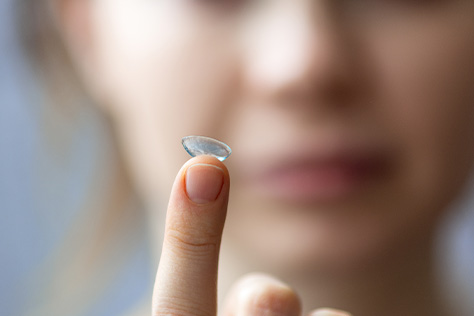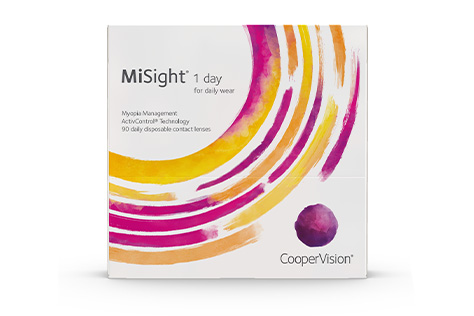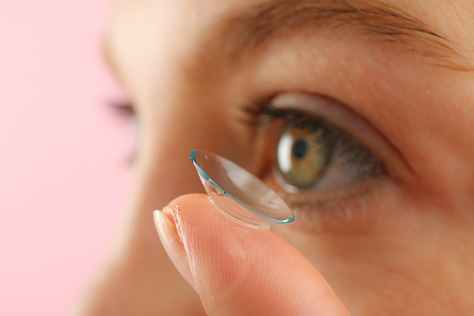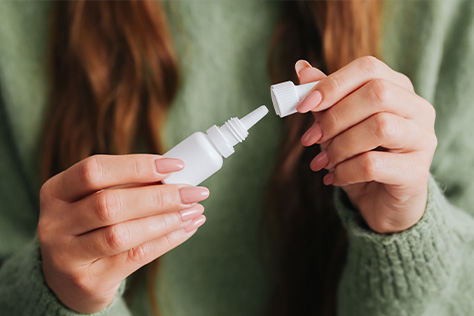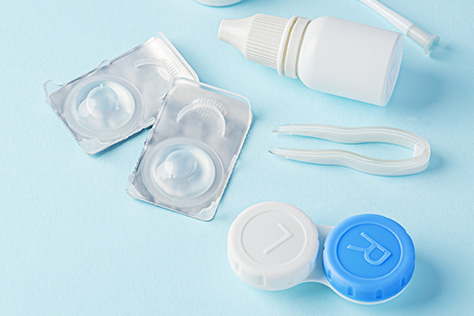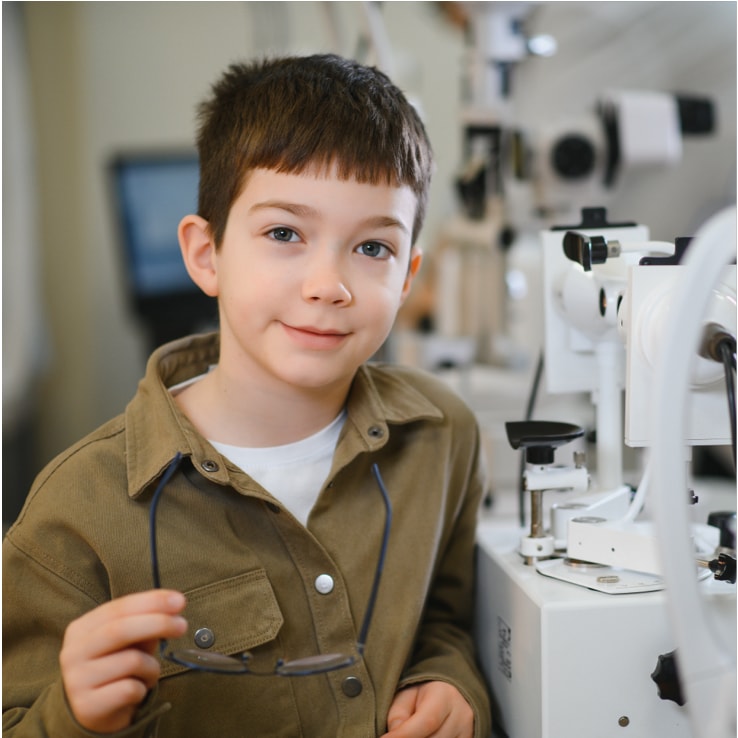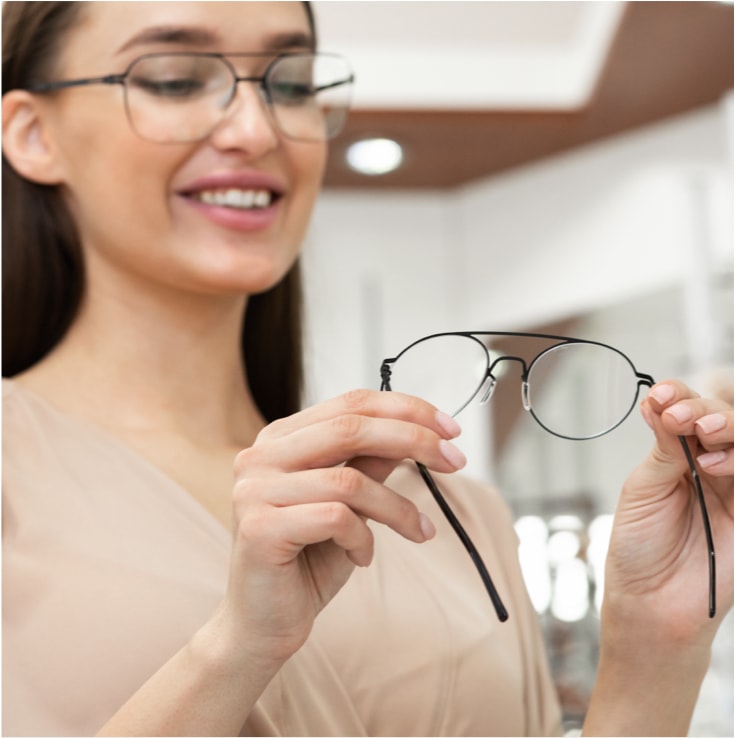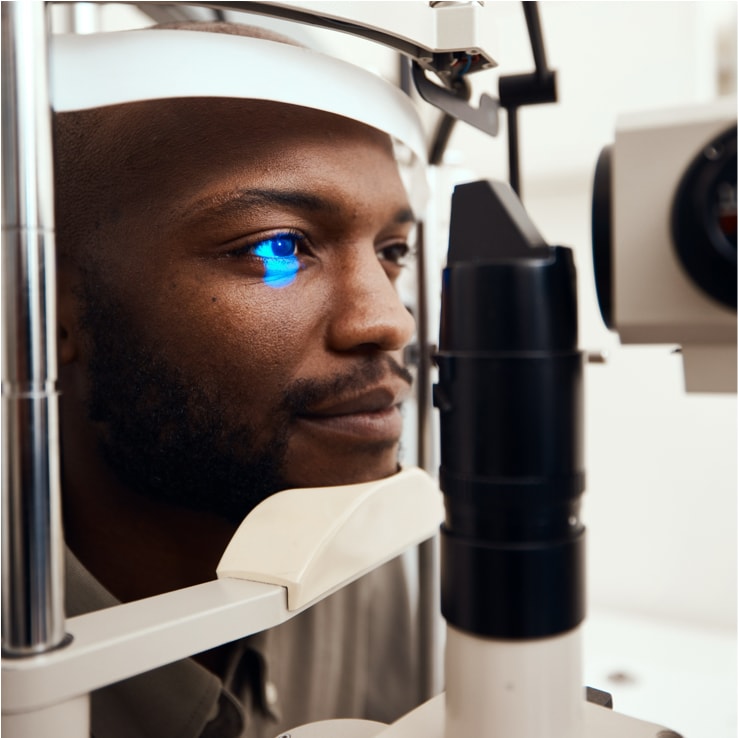
Supporting Healthier Vision for Kids & Teens
More and more kids are becoming nearsighted earlier in life, and their prescriptions often worsen year after year. Myopia management aims to change that. While traditional glasses or contact lenses can correct blurry distance vision, they don’t stop the progression of myopia. That’s where we come in.
Our team offers evidence-based myopia management strategies to help slow the progression of nearsightedness in children and teens. From customized contact lenses to Stellest myopia management lenses and low-dose atropine drops, we’ll help you choose the right option for your child’s lifestyle and vision needs.
It all starts with a pediatric eye exam! Contact us to schedule your child’s next exam today!
Request AppointmentWhy Myopia Management Matters
Myopia, also known as nearsightedness, means your child can see up close clearly but struggles to see objects in the distance. Higher levels of myopia are associated with an increased risk of:
- Retinal detachment
- Glaucoma
- Cataracts
- Myopic macular degeneration
Myopia management can help reduce these long-term risks by slowing how quickly the eyes change during the crucial growth years. The earlier we intervene, the more effective the treatment can be.
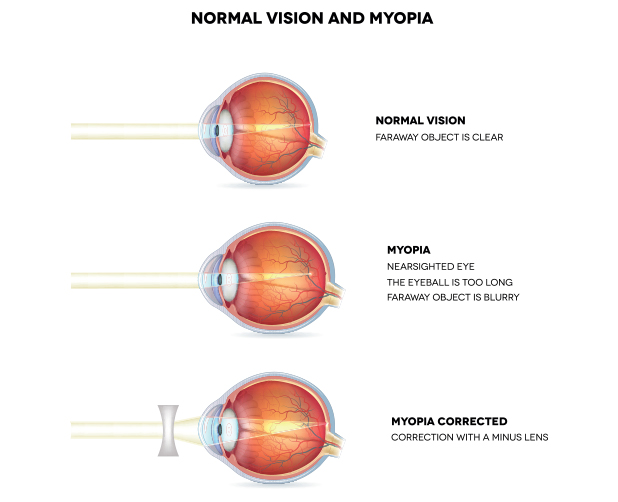

Technology That Guides Our Care
Precision matters in myopia management. Our approach is backed by modern diagnostics, allowing us to track and personalize treatment with accuracy. Some of the tools we use include:
- Axial length measurement: Measures the length of the eye to track how quickly it’s growing, an essential marker for myopia progression. This data helps us assess whether a current treatment is working or needs adjustment.
- Corneal topography: Creates a detailed map of the eye’s surface curvature, allowing us to design highly customized contact lenses, which are especially important for treatments like ortho-k and other specialty lens fittings.
- Lenstar: A noninvasive diagnostic tool that provides comprehensive insights by measuring axial length, corneal curvature, and refractive error in a single test, streamlining our ability to monitor and manage myopia effectively.
The Link Between Vision & Learning
Good vision plays a vital role in how children learn, focus, and engage with the world around them. When nearsightedness progresses, it can make everyday tasks like seeing the board clearly, following instructions, or staying focused during reading more difficult.
Because children don’t always realize their vision has changed, signs of myopia can be easily missed or mistaken for attention or learning challenges. That’s why proactive eye care is so important.
By slowing the progression of myopia, we’re not just protecting your child’s long-term eye health but helping them stay confident and comfortable in the classroom and beyond.
Custom Myopia Management Plans Built Around Your Child
Myopia often develops in school-aged children and typically worsens through adolescence. While glasses and contacts can improve vision clarity, they typically can’t slow this progression alone, which can eventually increase the risk of serious eye problems later in life.
Our team offers a range of clinically proven options to help manage and slow myopia progression. Many families benefit from a combination of treatments for optimal results.
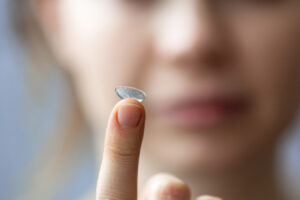
Ortho-k lenses are specially designed contact lenses worn overnight to gently reshape the front surface of the eye (the cornea). This non-surgical approach provides clear, glasses-free vision during the day, making it perfect for active kids.
Beyond improving vision, ortho-k has been shown to slow the eye’s axial elongation, helping to reduce the progression of myopia over time.
MiSight 1 day lenses are FDA-approved daily disposable contact lenses crafted specifically for myopia management in children. These lenses provide sharp, comfortable vision during the day while actively working to slow the progression of nearsightedness, giving parents a convenient and effective option for managing their child’s eye health.
We offer a range of specialty contact lenses designed to slow the progression of myopia while providing clear, comfortable vision. Multifocal lenses have multiple focus zones, similar to progressive reading glasses, that help correct vision at various distances and influence how the eye grows over time.
Alongside these, we provide other modern myopia management lenses like Zen Lens and CRT, custom-fitted to your child’s unique eye shape and prescription needs. These daytime contact lenses offer a convenient and effective option for managing nearsightedness with personalized care.

Our myopia management glasses feature specially engineered lenses that manage how light enters the eye, helping to reduce the elongation of the eyeball. These spectacle lenses offer a noninvasive, easy-to-wear option for children who need vision correction and myopia management.
Low-dose atropine drops are a safe, once-daily medication shown to be effective in slowing myopia progression, especially in younger children. This treatment is easy to use and can be combined with other therapies to provide comprehensive myopia management tailored to your child’s needs.
Every child’s eyes respond differently to treatment, so we offer combination therapies, like ortho-k with low-dose atropine drops, to maximize effectiveness. By personalizing your child’s myopia management plan, we can better manage progression and support healthier vision for years to come.
Take Steps Today for a Clearer Tomorrow
If your child’s vision is getting worse each year, it’s time to explore proactive options. Myopia management at Grove Eye Care is personalized, proven, and designed to help protect their long-term vision. Let’s find the right path forward together.
Contact us to schedule your child’s myopia management consultation today.
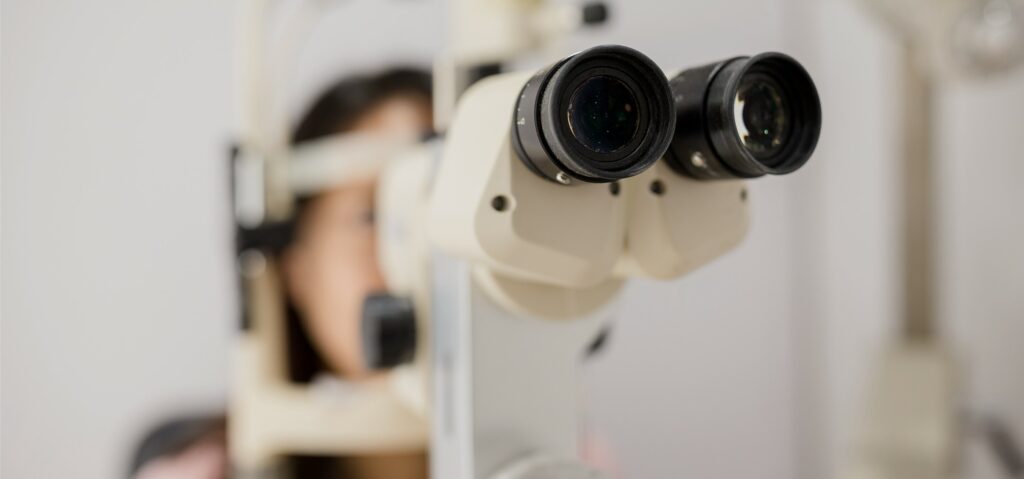
Richmond
Our Address
- 3601 Grove Ave
- Richmond, VA 23221
Contact Information
- 804-353-3937
- 804-358-1395
- frontdesk@groveeyecare.com
Hours of Operation
Midlothian
Our Address
- 14431 Sommerville Ct, Suite B
- Midlothian, VA 23113
Contact Information
- 804-888-8998
- 804-888-8999
- frontdesk@groveeyecare.com
Hours of Operation

What Our Patients are Saying
Wonderful experience from my initial call through to making my next appointment! The office team are friendly, professional, efficient, and kind. Dr. Deese took the time to listen to my concerns, examine my eye, explain my treatment plan and answer any questions. He is super personable and clearly very knowledgeable. I highly recommend the practice!
Michele
I’ve been coming here for a few years, but my former eye doctor retired last year, so my most recent appointment was with Dr. Wong. He was very thorough. I appreciated him indulging all my questions about the purpose of each machine, as well as, how different parts of the eye function. Great, seamless appointment.
Peighton
Dr Parsons is delightful. I’ve been going to Grove Eye Care for many years and when my doctor retired I was thinking maybe I’d look for someone closer to my home. But after meeting her and her caring professional team, I decided to stay…and am very happy I did!
Kathie
Dr. Parsons has been taking care of me and my family for years. The staff is amazing and very welcoming every time that I visit. They have state of the art equipment and technology. Dr. Parsons takes the time to thoroughly examine my eyes and she explains what she is doing step by step. The entire office is very clean and the environment is awesome!
Chaz
Top Notch! I had very nice experience. All the staff were very professional. My appointment on time. I was treated with the upmost of care and respect. All the care I was given was explained step by step not just of tests, but the why they were being done. My doctor made sure I understood the purpose of my whole exam. I was blown away by the attention I received. I appreciate their care.
Johnie
This was my first visit to your office. Everyone was helpful, polite positive and seem to enjoy their jobs. The girls at the front desk were fantastic. One even let me borrow her air pump to pump up my motorcycle tire. The doctor and the assistant eye specialist were excellent. Everything was explained to me and done in a professional manner.
Steven



